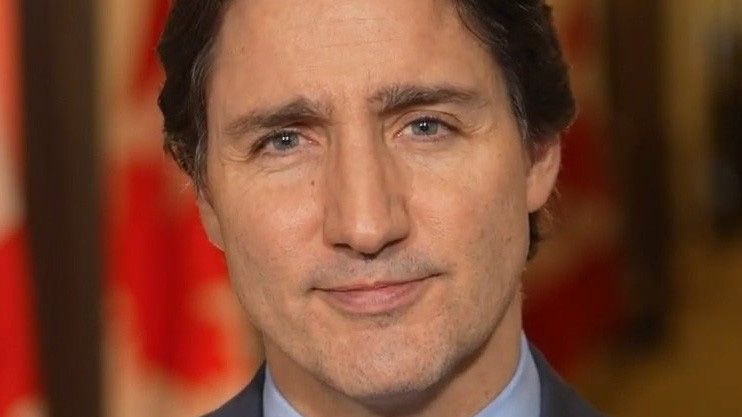Introduction
Web3 is taking over the world and decentralization is expanding and rapidly integrating into pop culture.
Blockchain and blockchain-related tech is quickly taking over spaces once occupied by web2 players.
Celebrities and iconic figures are leaning towards the hype and helping fan the flames. Most notable celebrities like Serena Williams and Eminem both purchase NFTs worth hundreds of thousands of dollars.
Someone even paid $500,000+ just to live next to Snoop Dog in the Metaverse.
Governments and big corporations are worried about their revenue streams in light of a decentralized future and are also looking for innovative ways to capitalize on it.
- Facebook changing their names to Meta.
- Addidas opened a store in the Metaverse.
- Meta (formerly Facebook) is building a Metaverse.
But what is a decentralized future? and why is it so popular nowadays?
A Decentralized Future? What does decentralization look like?
You’re probably wondering, “What does a decentralized future mean?”. It’s a head-scratcher, but it’s effortless to relate to after reading what enables this kind of future.
A decentralized future is one where:
- DeFi protocols replace banks.
- Crypto is the most accepted by most merchants.
- Investments, Bonds, and Loans are issued on Smart Contracts.
- DAOs replace large corporations.
- Your biodata is irrelevant, and NFTs will be the most popular authentication method.
- People will carry out most of their daily work activities in the Metaverse.
Right now, it seems like a massive leap from where our society is at. Well, just to let you know, most of what I just described is already in effect.
You might have noticed the new words I just put up like:
- DeFi (Decentralized Finance).
- DAOs (Decentralized Autonomous Organizations)
- NFTS (Non-Fungible Tokens)
- The Metaverse.
Let’s talk about them a little.
DeFi

DeFi or Decentralized Finance can be defined as traditional financial services offered on a blockchain.
These financial services include:
- Investments
- Lending and Borrowing
- Savings
- Exchanges
- Bonds
Through decentralization, DeFi will replace banks and centralized finance (CeFi).
People can now make transactions without the oversite of banks and governments.
This is especially great news for disenfranchised people who have been cut off from the financial system due to a lack of adequate papers that hinders their participation.
It doesn’t matter where in the world a participant might be. They will be able to participate in the DeFi experience.
Here is some popular DeFi dApps on Ethereum:
DAOs
Decentralized Autonomous Organizations, or DAOs, are organizations that are entirely run by code and are the future of organizations in a decentralized world.
Traditionally, companies have had a hierarchy with a CEO at the top and a board of directors below. These individuals frequently have total control over a business, with the CEO having the final say and decision-making authority.
Despite contributing more than 90% to the organization’s continuous existence, employees have little to no decision-making power within the company.
DAOs utilize the blockchain to make trustless decisions. Every DAO has its token called the Governance Token. Governor Tokens are used to:
- Become a member.
- Bring up proposals.
- Vote on proposals.
Unlike Facebook and Microsoft, every member of a DAO can vote on proposals and potentially become decision-makers within the organization.
An example of a proposal could be:
- To pay a developer to build a new website for the DAO.
- To decide whether or not they need a new host server.
- To ask for donations to a charity.
Anything can be a proposal, and when it is put to the vote, every member has the opportunity to vote.
If a majority of the members vote in favor of the motion, the proposal is approved, and whatever payment is due will be released to the involved persons.
However, every vote does not have equal weight. The weight of your vote is based on how many tokens you have.
If you had twice as many…
Read More: web3.hashnode.com









 Bitcoin
Bitcoin  Ethereum
Ethereum  XRP
XRP  Tether
Tether  Solana
Solana  Dogecoin
Dogecoin  USDC
USDC  Cardano
Cardano  Lido Staked Ether
Lido Staked Ether  TRON
TRON  Avalanche
Avalanche  Wrapped stETH
Wrapped stETH  Sui
Sui  Chainlink
Chainlink  Toncoin
Toncoin  Shiba Inu
Shiba Inu  Stellar
Stellar  Wrapped Bitcoin
Wrapped Bitcoin  Hedera
Hedera  Polkadot
Polkadot  WETH
WETH  Bitcoin Cash
Bitcoin Cash  Uniswap
Uniswap  Pepe
Pepe  Litecoin
Litecoin  Hyperliquid
Hyperliquid  LEO Token
LEO Token  Wrapped eETH
Wrapped eETH  NEAR Protocol
NEAR Protocol  Internet Computer
Internet Computer  Ethena USDe
Ethena USDe  USDS
USDS  Aptos
Aptos  Aave
Aave  Mantle
Mantle  Render
Render  Bittensor
Bittensor  Cronos
Cronos  POL (ex-MATIC)
POL (ex-MATIC)  Ethereum Classic
Ethereum Classic  Artificial Superintelligence Alliance
Artificial Superintelligence Alliance  Virtuals Protocol
Virtuals Protocol  WhiteBIT Coin
WhiteBIT Coin  MANTRA
MANTRA  Arbitrum
Arbitrum  Monero
Monero  Tokenize Xchange
Tokenize Xchange